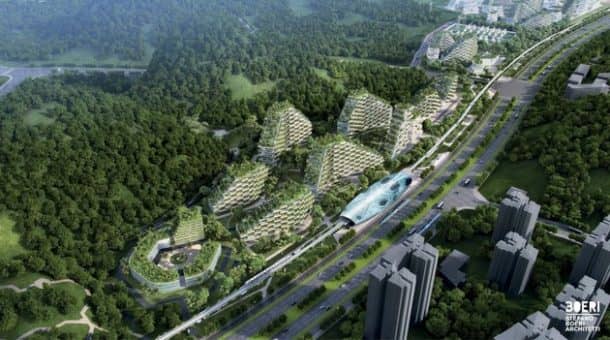The great Chinese surge in economic power has come at a huge environmental cost, with the cities turning pink and nearly inhabitable due to smog and pollution. So the Chinese have had to hustle and work on technologies and techniques (e.g. forests) to improve the situation, as evident from initiatives like 6,700 electric cars and smog sucking vacuum towers.

In a similar vein of action, China is now looking to construct World’s first ‘forest city’ to help cut down the CO2 emissions and the environmental cost. The city is designed by Stefano Boeri, who is the same architect from the two vertical skyscraper forests.

The new forest city will have the capacity to hold 30,000 people, and the copiousness of trees and plants will help absorb almost 10,000 tons of CO2 and 57 tons of other different pollutants per year while producing approximately 900 tons of oxygen every year.

The city is already under construction in Liuzhou, Guangxi province.
The forest city will use over a million plants from 100 different species to achieve the feat along with the addition of 40,000 trees planted in the facades of the houses and on every surface imaginable.

The new Liuzhou Forest City will use a fast rail service to connect with the existing Liuzhou city, and will also boast a number of schools and two hospitals. The authorities also plan to make the city self-sustainable using solar and geothermal power resources.

Mr. Boeri’s website states:
The diffusion of plants, not only in the parks and gardens or along the streets, but also over building facades, will allow the energy self-sufficient city to contribute to improve the air quality (absorbing both CO2 and fine dust of 57 tons per year), to decrease the average air temperature, to create noise barriers and to improve the biodiversity of living species, generating the habitat for birds, insects and small animals that inhabit the Liuzhou territory.

The project is estimated to finish by 2020, and if it goes well, China will look to replicate the same in Nanjing, Shanghai, and Shenzhen. But the country still requires a whole lot of efforts to create a cleaner environment.


